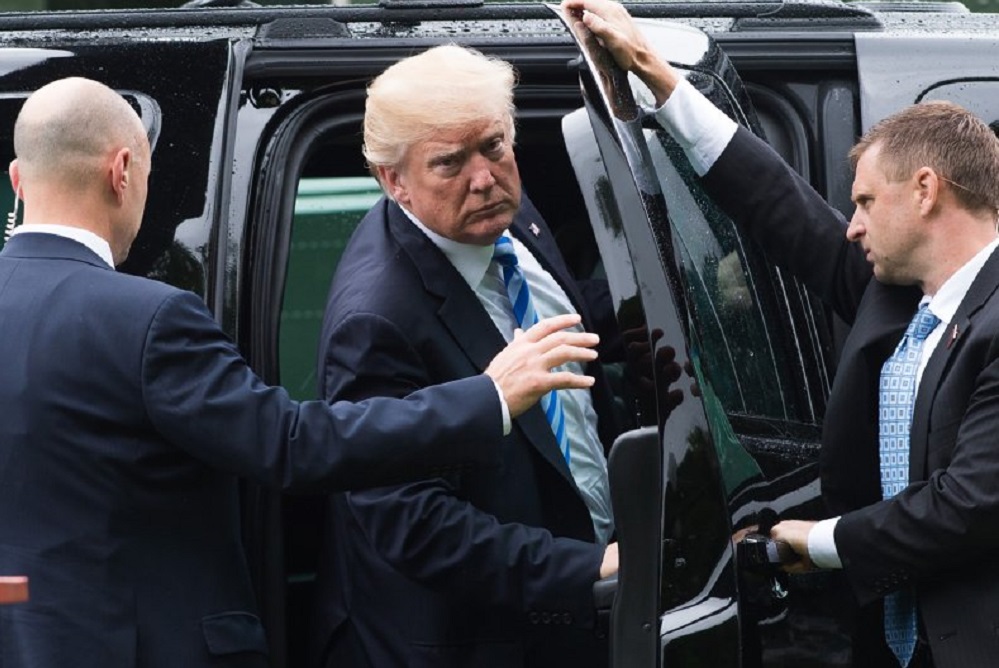
OPINION: This article contains commentary which may reflect the author’s opinion
As the FBI concluded its Russia investigation, specifically into former president Donald Trump, you can find an electronic document that spells out just how wide a net it gave its agents to find evidence relevant to a crime committed by a president.
As a result, this leeway was largely attributed to Igor Danchenko, the Russian-born US resident, who played a key role in the development of Christopher Steele’s dossier in the 2016 election season. Steele’s London-based research project, now widely viewed as a hoax, was funded by Democrats. It was used for months by the anti-Trump forces under the direction of Rep. Adam Schiff of California, in order to sabotage, harass, and disorient the presidential administration.
The trial of Danchenko for allegedly lying to FBI agents is set to begin on October 11 in the US District Court in Alexandria, VA, after he was accused of five counts of lying to the FBI by Special Counsel John Durham.
What kind of motivation did Mr. Danchenko give to the FBI? It was he who informed Steele that Trump, his campaign, and the Kremlin were involved in a “well-developed” conspiracy of cooperation. As cited by Mr. Danchenko, the claim comes from “Chamber President-1” – Sergei Millian, the former head of a Russian-American Chamber of Commerce.
In fact, the FBI was able to make its investigative decisions in large part based on the allegations handed down by Chamber President-1, as stated in Mr. Durham’s indictment.
There was no Russian conspiracy at all. In spite of this, the FBI chiefs appointed by Obama were determined to uncover such a historic crime.
Steele was previously regarded by the news media as the best spy in history, and the FBI had previously used him as a source as part of their investigation of the case. As such, news outlets freely and relentlessly ran with this information as if it were proven fact, not bothering to investigate it first for authenticity.
Through an open records request last year, Rowan Scarborough of the Washington Times was able to obtain a copy of the FBI’s 2019 case-closing memo for Mr. Trump.
The reporter noted how extraordinary the deeply revealing information was in “how it spelled out possible crimes by an American president — mostly rooted, it seems to me, in that one phrase, ‘well-developed conspiracy.’”
The document in question, reviewed in depth by Scarborough, was titled, “Closing communication … Foreign Agents Registration Act; Sensitive Investigative Matter.”
“I take it by the headline that Mr. Trump was being examined on suspicion of violating FARA, the law that requires an agent of a foreign country to register with the Justice Department,” Scarborough noted in his opinion piece.
There are more FBI suspicions. The closing document states, “On or about May 16, 2017, using predetermined criteria established by the Crossfire Hurricane investigative team the FBI opened [a counterintelligence investigation] based on an articulable factual basis that reasonably indicated that President Donald J. Trump may be or had been, wittingly or unwitting, involved in activities for or on behalf of the government of the Russian Federation which may have constituted violations of federal criminal law or threats to the national security of the United States.”
The “conclusion summary” called the action an “administrative closing.” In fact, Special Counsel Robert Mueller did not determine that Mr. Trump or any colleague conspired with the Kremlin.
Mr. Trump was not under investigation until he fired FBI Director James Comey in May 2017. That kicked off a Washington storm. Deputy Director Andrew McCabe, now a CNN analyst, opened the Trump probe that month. The deputy attorney general took Crossfire Hurricane from career Justice lawyers and handed it to Mr. Mueller and a cast of Democratic-aligned prosecutors.
In Scarborough’s opinion, this was Mr. Trump’s most disastrous decision as president until 2000, when he came up with his push to “Stop the Steal.”
Mr. Comey’s troops were not finding collusion. There did not seem to be any plan to indict Michael Flynn, whom Attorney General William Barr eventually exonerated. The whole matter was destined for closure in 2017. A more patient Mr. Trump could have focused on his presidency.
As the dossier’s last chapter comes to an end, the Danchenko trial will provide testimony from witnesses to provide an explanation as to why the 35-page binder containing a dozen felony allegations was compiled.
In a court filing on July 12, Mr. Durham disclosed that he has sent out 30 subpoenas to various people.
Scarborough’s important deep dive into this document truly exposes the depth of the FBI’s corruption, which is now evident goes beyond the Trump administration. It still continues today, if not more so, as there’s no end to what this weaponized government organization will do to keep (or remove) Trump or anyone from office who doesn’t play by their rules.
To learn more about this, along with how the dossier workforce came together, read Scarborough’s important piece for the Washington Times HERE.
Source: The Republic Brief